Discover 11 hidden attractions, cool sights, and unusual things to do in Bendigo (Australia). Don't miss out on these must-see attractions: Sacred Heart Cathedral, Rosalind Park, and Central Deborah Gold Mine. Also, be sure to include Golden Dragon Museum in your itinerary.
Below, you can find the list of the most amazing places you should visit in Bendigo (Victoria).
Table of Contents
Sacred Heart Cathedral
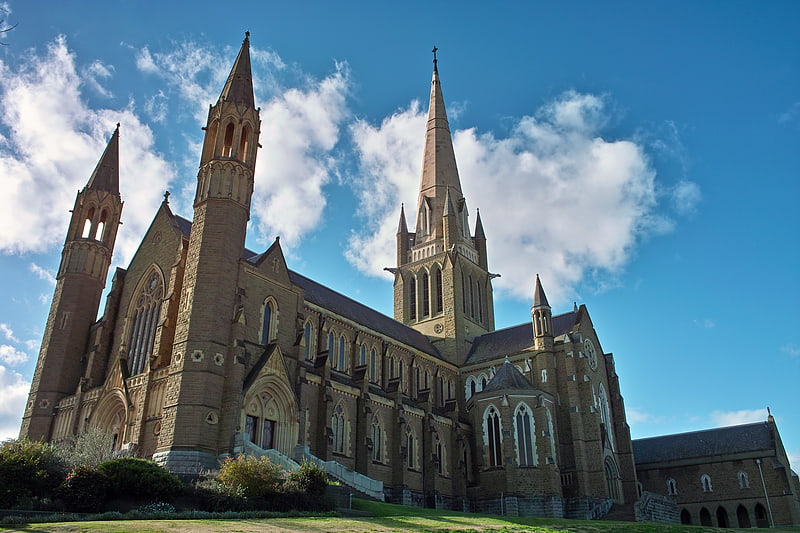
Cathedral in Bendigo, Australia. Sacred Heart Cathedral, Bendigo is the cathedral church of the Roman Catholic Diocese of Sandhurst and seat of the Bishop of Sandhurst. The cathedral is located in the provincial city of Bendigo, Victoria, Australia. It was designed in the Gothic style in 1895 by an architect of the firm Reed, Barnes and Tappin.[1]
Address: Corner High and Wattle Streets, 3550 Bendigo
Rosalind Park
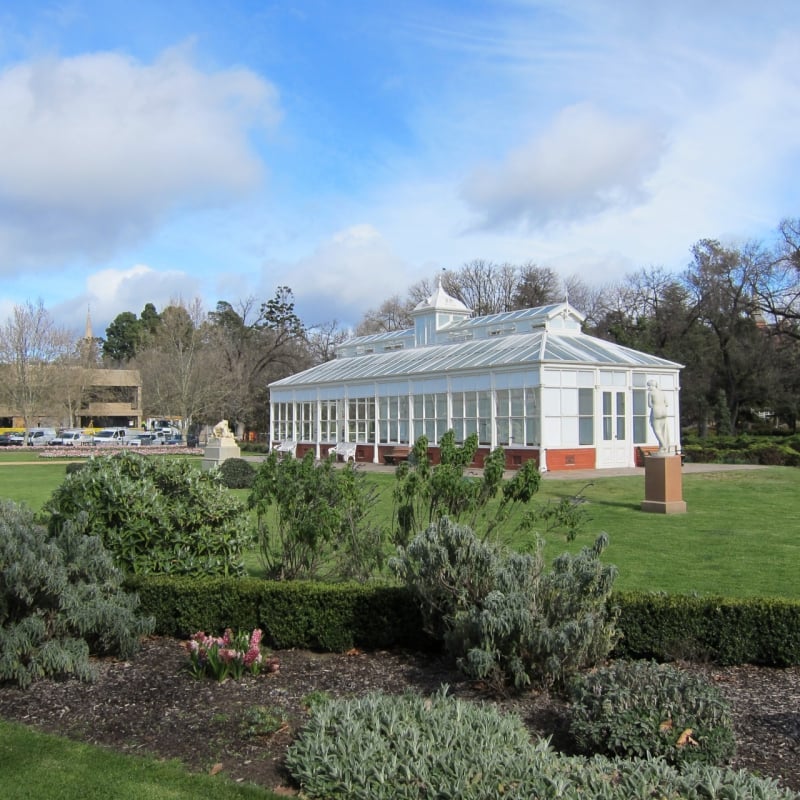
Park in Bendigo, Australia. Rosalind Park is an Australian park in Bendigo, Victoria. Prior to white settlement, a grassy woodland surrounding what is now called Bendigo Creek. At that time the creek was little more than a chain of pools and billabongs. This area would have been an important source of food and water for the indigenous Dja Dja Wrung people living in dry central Victoria.
In the 1850s gold was discovered in the area, radically transforming the area that is now Rosalind Park. Bendigo was one of the richest gold mining regions in the world, with more gold found in the region from 1850 to 1900 than anywhere else in the world. At present it remains the seventh richest goldfield in the world. Puddling mills, shafts and piles of mine wastes and cast offs dominated the landscape. In 1852 the area was officially designated a Government Camp precinct, the bounds of which still roughly designate the park today. The Government Camp area comprised 66 acres and contained police barracks, gaol and lock-up, a courthouse (which is still in use), a gold office and other government buildings, offices and quarters.
In 1856 the local Gold Commissioner, Joseph Panton, first suggested that the camp should be turned into a park, but it was not until 1861 that 59 acres were formally reserved for the park and handed over to the Sandhurst Borough Council (now the City of Greater Bendigo). The first park gardener was appointed in 1870 and established the basic layout of Rosalind Park which remains to this day.[2]
Address: Pall Mall, 3550 Bendigo
Central Deborah Gold Mine
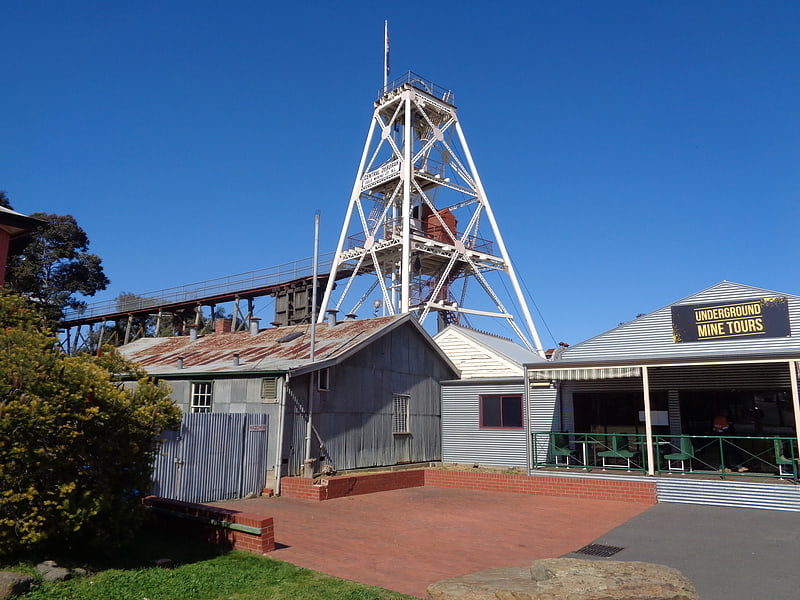
The Central Deborah Gold Mine is a non-active gold mine and tourist attraction in Bendigo, Australia. It was listed on the Victorian Heritage Register on 18 November 1999.
The mine was opened in 1939 by the Central Deborah Gold Mining Company during a 1930s revival of the gold industry, extending an existing 108 ft shaft from many years earlier with new machinery. It was one of the last mines to open on the Bendigo goldfields and one of the few to stay open during World War II. It was expanded during 1945–46, with extensions and new machinery. It reached its maximum depth (now recorded as 412m) during the 1940s. It closed in November 1954, having produced 29,865 ounces of gold in its lifetime; the closure of the North Deborah Mine two weeks later marked the last mine in Bendigo to close.
It was reopened in 1986 as a tourist attraction for underground tours, with its shaft being widened to allow for larger lifts. It was preserved and restored by a local heritage organisation, the Bendigo Trust, which also restored the city's tramways. It still retains its original buildings and much of its fittings and mining machinery.
The Violet Street tram stop of the Bendigo Tramways route connects the mine to Lake Weeroona, the Bendigo Joss House Temple and other local tourist attractions, with the route's western end terminating at the mine.[3]
Address: 76 Violet St, 3550 Bendigo
Golden Dragon Museum
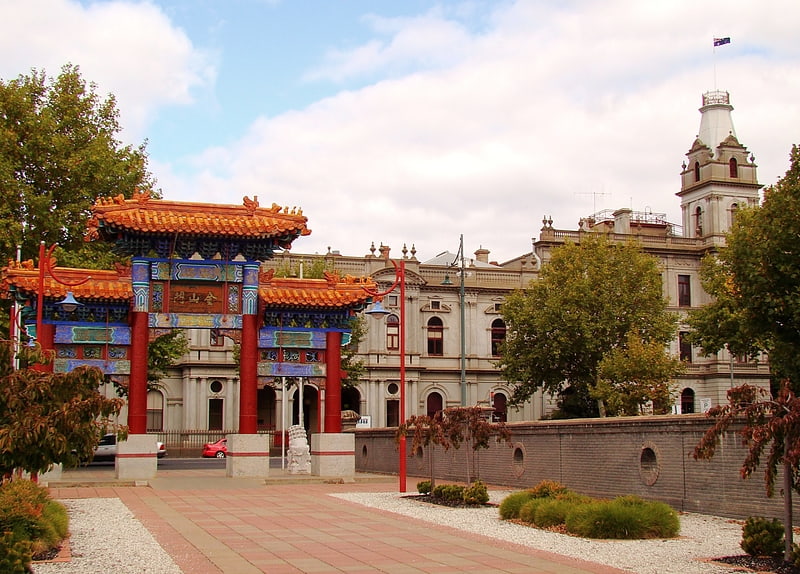
Museum in Bendigo, Australia. The Golden Dragon Museum is situated in the city of Bendigo, Victoria, Australia. The museum is dedicated to the culture and history of Chinese Australians, particularly in the region. Built on the historical site of one of Bendigo's Chinatowns, the museum's precinct also includes Chinese Gardens and a temple to Kuan Yin. Through the museum accreditation program, it was the first accredited museum in Victoria.[4]
Address: 5-11 Bridge St, 3550 Bendigo
Bendigo Art Gallery
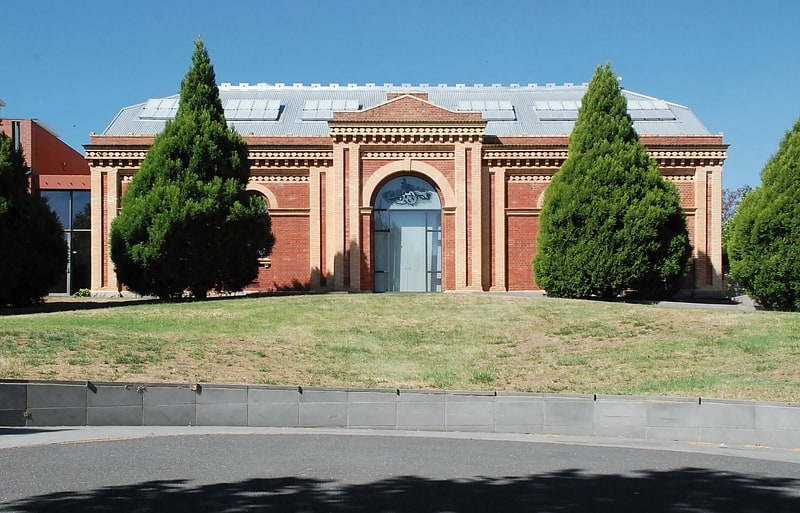
Art gallery in Bendigo, Australia. Bendigo Art Gallery in Bendigo, founded in 1887, is one of Australia’s oldest and largest regional art galleries. The Bendigo Art Gallery hosts Australia's richest open painting prize, the Arthur Guy Memorial Painting Prize, worth $50,000, which was launched in 2003.[5]
Address: 42 View St, 3550 Bendigo
Bendigo Stadium
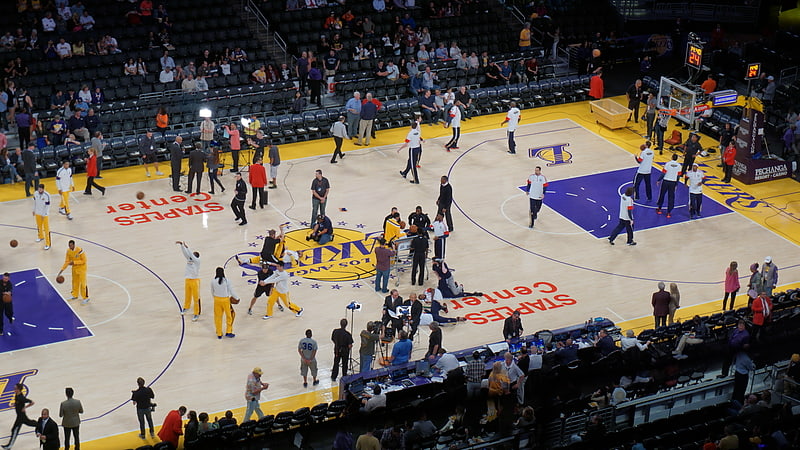
Stadium in the Electoral district of Bendigo West, Australia. Bendigo Stadium is an Australian sports and entertainment centre in Bendigo, Victoria. The stadium is home to the Bendigo Braves and Bendigo Spirit. It hosted basketball matches during the 2006 Commonwealth Games. The stadium's facilities include ten indoor sports courts, major exhibition and function areas, a licensed clubroom and associated administration facilities.
The stadium has the flexibility to be used for major sporting, cultural and entertainment events and has held such events as The Young Divas, Vanessa Amorosi, international basketball, snooker and volleyball.
The largest recorded attendance at the venue was on 3 March 2013 when Bendigo Spirit defeated the Townsville Fire 71–57 in the 2012-13 WNBL Grand Final. In May 2018, the venue was re-opened after a $23 million redevelopment was completed which upgraded the facilities and increased the venue's capacity.
The stadium hosted its first Suncorp Super Netball match on 25 May 2019, when Collingwood Magpies played West Coast Fever in a 2019 Suncorp Super Netball Round 5 match. It was part of a double header that also featured Tasmanian Magpies play Western Sting in an Australian Netball League fixture.
The facility co-hosted the 2003 FIBA Oceania Championship where the Australian national basketball team won the gold medal.
Bendigo also hosted Group 3 of The International Volleyball Women's Grand Prix in June 2016 over 3 days of which Australia competed against Cuba Columbia and Croatia
The Arena has also hosted Australian National Basketball League Games for Melbourne United during the 2020–21 NBL season, Including Throwdown V against the South East Melbourne Phoenix. It also hosted a Round 11 Match where the New Zealand Breakers played Melbourne United in a Breakers Home Game.[6]
Address: 91 Inglis St, 3550 West Bendigo
Capital Theatre
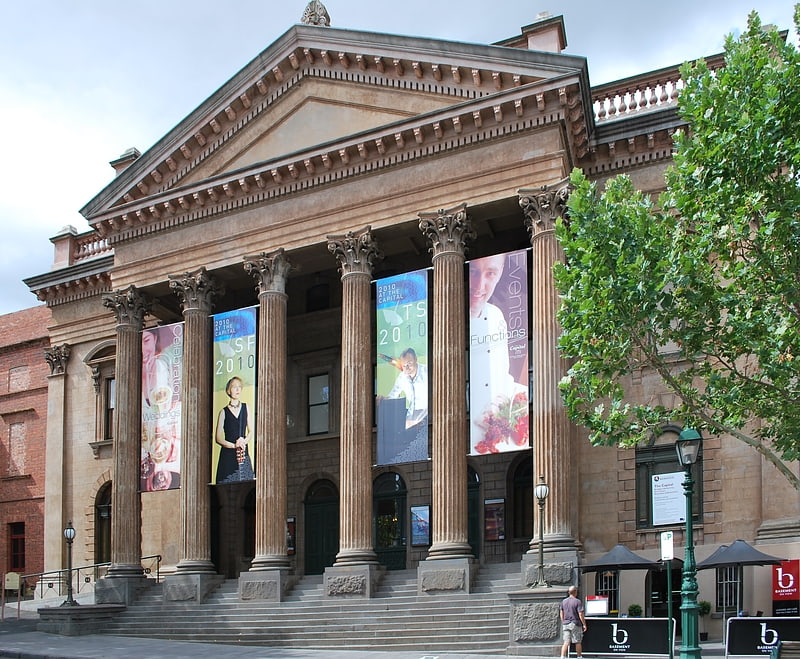
Theatre. The Capital Theatre is a 480-seat theatre in Bendigo, Victoria, Australia. Designed by prolific Bendigo architects William Vahland and Robert Getzschmann, the building opened in 1873 as a Masonic lodge, and was divided into a private and public section, the latter containing a ballroom where an array of entertainment was provided, including opera, plays, lectures, recitals and, later, silent movie screenings. In 1890, the Masons refurbished the building to include a dedicated theatre room. Originally called the Mason Theatre, it was renamed the New Britannia in 1912 and then the Capital Theatre in the 1930s. Today the whole building is occupied by the Capital, and has state and national heritage listing.[7]
Address: 50 View Street, Bendigo
Botanic Gardens
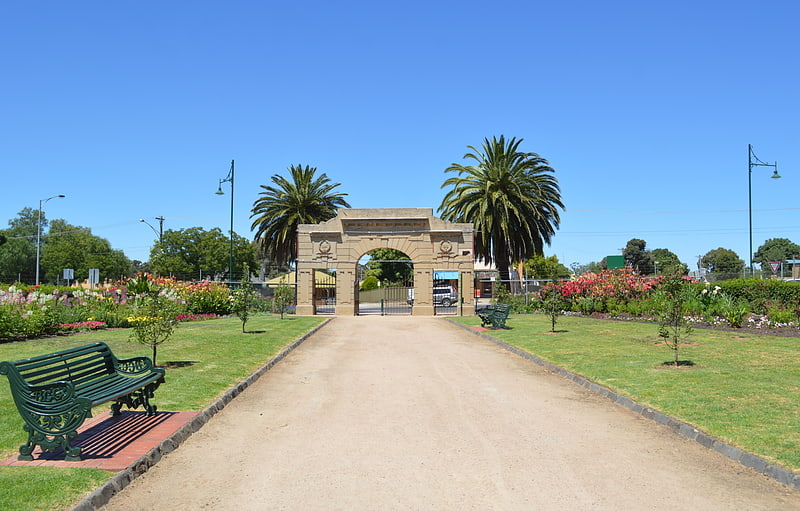
Botanical garden in the White Hills, Victoria, Australia. The Bendigo Botanic Gardens, formerly known as the White Hills Botanical Garden, are Australian botanic gardens in the Bendigo suburb of White Hills, Victoria. The gardens are one of regional Victoria's earliest botanic gardens.
The Bendigo Botanic Gardens were founded in 1857 after land had been reserved for the site on the 1854 plan of Bendigo.
In 1925, an Arch of Triumph was erected on the Napier Street (Midland Highway) entrance as a memorial to the fallen from the First World War.[8]
Address: 557-559 Napier St, 3550 Bendigo
Alexandra Fountain

Fountain in Bendigo, Australia. Alexandra Fountain in the Australian city of Bendigo, Victoria, is regarded as one of the city's most prominent landmarks and monuments.
The fountain is located in Bendigo's Charing Cross area at the intersection of View Street and Pall Mall. Charing Cross effectively stands at the centre of the city and is one of Bendigo's busiest and most prominent intersections. The fountain stands opposite the main entrance of Rosalind Park.
Alexandra Fountain was funded from the proceeds of the Bendigo Juvenile Industrial Exhibition (1879), a £500 gift from George Lansell and a further £700 from the Sandhurst City Council (now the City of Greater Bendigo). The fountain was designed by William Vahland (1828–1915), a local architect responsible for some of the city's most prominent buildings. The fountain was named in honour of Alexandra, Princess of Wales. Its grand opening on 5 July 1881 was attended by her sons Prince Albert and Prince George.
Other than the Exhibition Fountain, built in 1880 and located in the Melbourne's Carlton Gardens, the Alexandra Fountain is the largest and most ornate municipal fountain in Victoria. The fountain stands 28 feet (8.5 m) high and sits in a 50 feet (15 m) diameter circular pool which itself is 2 feet (0.61 m) deep. It is made from 20 tonnes (22 tons) of Harcourt granite, cast iron and painted stone. Decoratively the fountain includes lion head spouts, four allegorical female figures, spouted bronzed mer-horses and dolphins, medallions of seashells, dolphins and tridents also decorate the fountain. The pool is bordered by a decorative cast-iron fence and lit with four cast-iron lamps.
Historically the fountain is a monument to the success of the goldfields and the Bendigo region. Aesthetically the fountain is fairly typical of late Victorian monumental design but is unusual in that few fountains were built according to this theme.
As of 2017 a AU$350,000 refurbishment project is underway. The restoration project will include repairs and repainting of the balustrade and masonry, including repainting and re-rendering the plaster work as well as plumbing and electrical work.[9]
Bendigo Town Hall
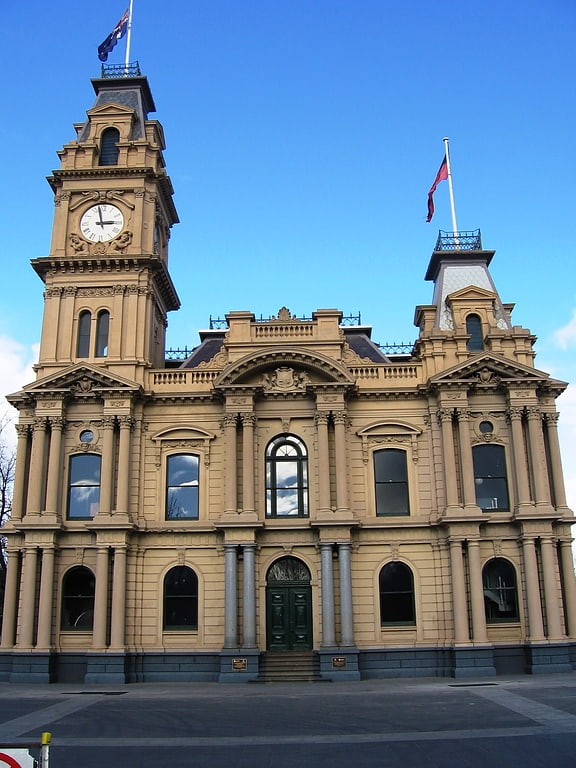
Bendigo Town Hall is prominently located at the intersection of Bull Street and Hargreaves Street in Bendigo, Victoria, Australia. It is considered one of the finest Victorian-era Second Empire buildings in Australia.[10]
Address: 189-193 Hargreaves Street, Bendigo
St Paul's Cathedral
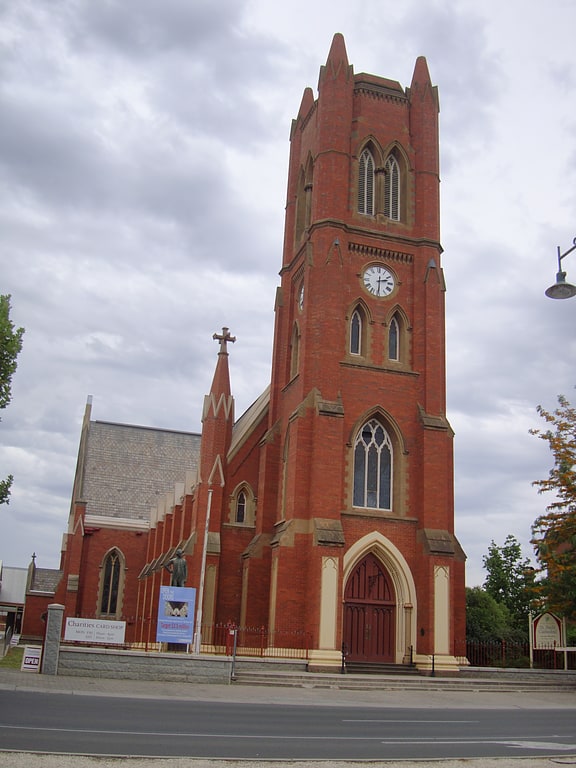
Anglican church in Bendigo, Australia. St Paul's Cathedral, Bendigo, is an Anglican cathedral in Australia. It is the cathedral church of the Diocese of Bendigo in central Victoria.[11]